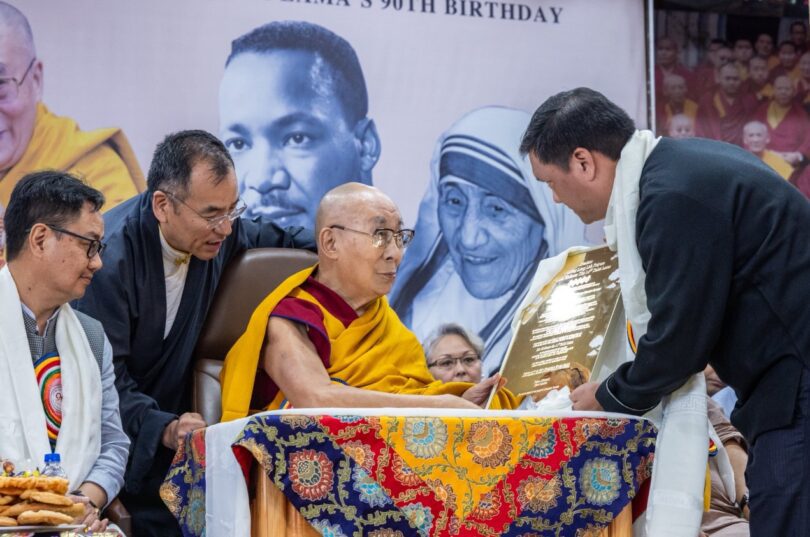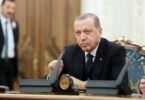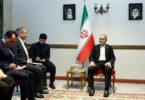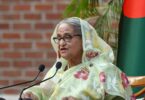An important statement by His Holiness the Dalai Lama on May 2025 in Dharamsala and two events related to him during July 2025, have caused more heat than that of the Indian summer to the Chinese Communist Party (CCP). The last line of HH Dalai Lama’s page-long statement is “I hereby reiterate that the Gaden Phodrang Trust has sole authority to recognize the future reincarnation; no one else has any such authority to interfere in this matter”
The first of the events is Arunachal Pradesh Chief Minister Pema Khandu’s visit to Dharamsala for HH Dalai Lama’s 90th birthday along with some of his statements then and the other is the Dalai Lama’s visit to Ladakh.
“Our border is with Tibet, not China… China, in its current form only emerged after the communist revolution. There was no historical or cultural connection between Arunachal Pradesh and China. Before the Chinese occupation of Tibet in the 1950s, the people of Arunachal Pradesh had spiritual, cultural, and trade relations with the Tibetan people. Our ties are ancient… None of the Indian states directly share borders with China, we share borders with Tibet only…” This is what the CM Khandu stated after attending the Ghoton celebrations commemorating His Holiness the Dalai Lama’s 90th birthday on July 6, 2025 at Dharamsala.
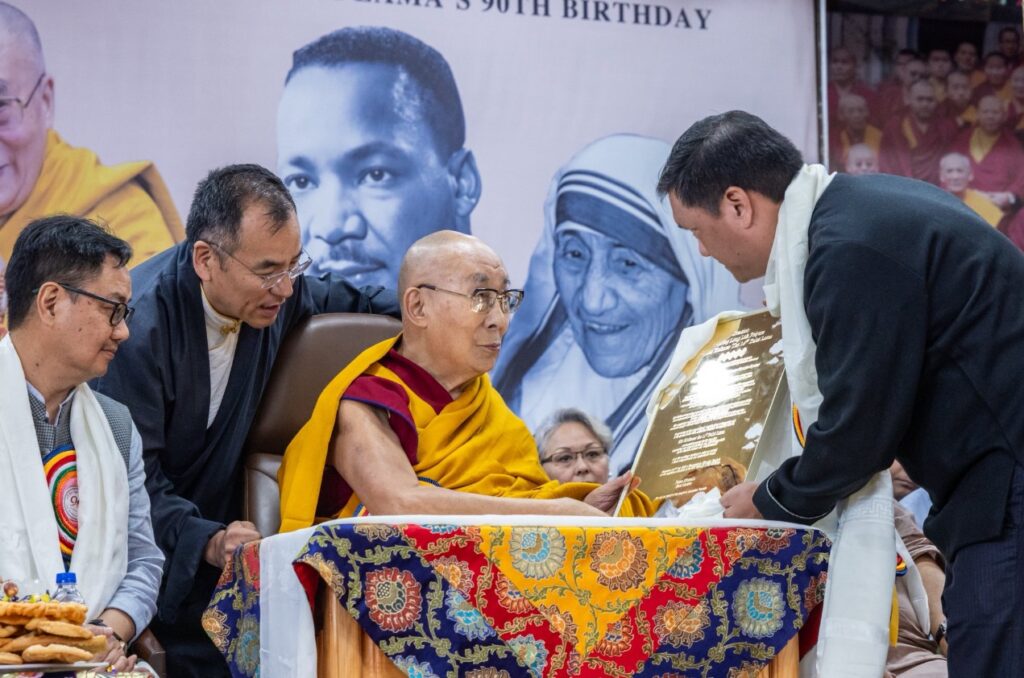
Accompanied by Union Minister Kiren Rijiju, the Arunachal CM was later met by Secretary Palden Dhondup of the Department of Home, Central Tibetan Administration (CTA) and his protocol team for a discussion focusing on the welfare and development of Tibetan settlements in Arunachal Pradesh. Secretary Palden Dhondup expressed heartfelt appreciation for the Government of Arunachal Pradesh’s longstanding and generous support to the Tibetan community.
In a media interview Khandu strongly refuted Beijing’s territorial claims and emphasized that Arunachal’s relationship lies with Tibet, a nation that was forcibly occupied by China in the 1950s. He asserted that Arunachal Pradesh shares roughly 1,200 km of its border with Tibet, about 100 km with Bhutan, and 550 km with Myanmar. His remarks were an appropriate response to repeated Chinese territorial claims over Arunachal Pradesh, including designating it as “Zangnan” or “South Tibet.” These attempts by Beijing were also marked by another favourite ploy of renaming various towns, rivers, and geographical features in Arunachal in Mandarin, a move widely condemned by India as a violation of sovereignty and an attempt of cartographic aggression. “Changing names does not alter facts,” Khandu responded. “Renaming our places in their language will not rewrite history or change ground realities.”
Khandu represents the Tawang constituency, where many venerated Tibetan Buddhist monasteries are located and where Major Ralengnao aka Bob Khating of the Assam Regiment came on an expedition in 1951 and after getting a very positive response from village elders that the Tibetan people of that region would much prefer to be under India, rather than China and then hoisted the Indian Tricolour there bringing that region under India.
The Arunachal CM also voiced serious concern over China’s mega dam project on the Yarlung Tsangpo River, known as the Brahmaputra from where it enters India. The hydropower project, located near the Great Bend in Tibet’s Medog County, close to the Arunachal border, has been criticized for its lack of transparency and potential environmental fallout. Referring to the dam as a “ticking water bomb”, Khandu warned, “If the dam collapses due to a natural disaster or if water is released without prior intimation, it could have devastating consequences for Arunachal Pradesh and Assam. We are dealing with a serious risk to the lives and livelihoods of people downstream.”
On the Dalai Lama’s reincarnation which the Chinese Communist Party consider as a very sensitive issue, Khandu rejected China’s self-assumed authority in spiritual matters, affirming that Beijing has no role to play in determining the next Dalai Lama. “The next Dalai Lama will be born in a free world,” he said. “This is a spiritual decision rooted in Tibetan Buddhist traditions, not a matter for a political regime to dictate.”
And in what would amount for the Chinese as salt sprinkled on wounds, Khandu affirmed his solidarity with the Tibetan spiritual community, by urging the government to confer India’s highest civilian honour, the Bharat Ratna, on His Holiness the Dalai Lama. He was quoted declaring, “The Dalai Lama is a global symbol of peace and compassion. He has contributed immensely not just to the Tibetan cause but also to India and humanity. He truly deserves the Bharat Ratna.”
The second event was that on July 12, 2025, the Dalai Lama flew directly from Dharamsala to Leh, Ladakh in an Indian Air Force aircraft on a month-long visit. On arrival he was welcomed by Ven (Venerable) Thiksey Rinpoché, Ven Thuksey Rinpoché, the Chief Executive Councillor of Ladakh Autonomous Hill Development Council, Tashi Gyalson, the President of the Ladakh Buddhist Association, Dawa Tashi, the President of the Ladakh Gompa Association, Ven Dorjé Stanzin, Representatives of the Muslim and Christian communities, the Director General of Ladakh Police, the Deputy Commissioner (DC) of Leh and the Superintendent of Police.
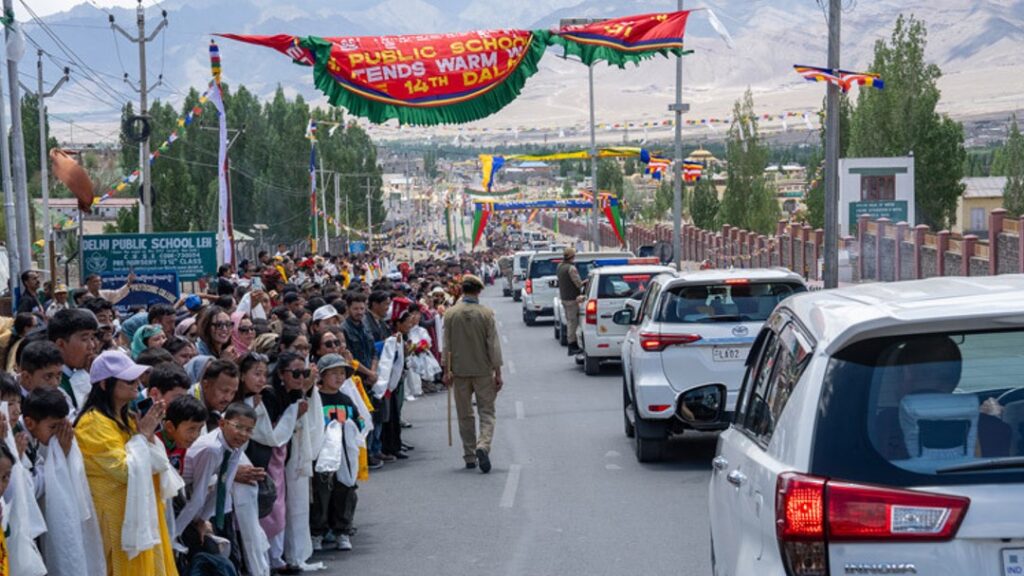
In Ladakh, Buddhists form approximately 40% of the total population, amounting to around 108,761 individuals, making them the second-largest religious group in the region, following Muslims.
After the welcoming ceremony, His Holiness and his entourage began the nine-kilometre journey to Shewatsel Phodrang. Ladakhis and Tibetans, in a jubilant mood lined the road all the way. Jeeploads of costumed dancers and monk musicians drove in front. In places the crowds were several rows deep. They held flowers, silk scarves and incense in their hands. Others held umbrellas against the fierce sun. Many sang and danced as His Holiness passed. In addition to Buddhists, boys and girls from Muslim schools greeted His Holiness. A surprising number of young people shed tears of joy to see His Holiness as he passed.
At Shewatsel Phodrang (HH Dalai Lama's official residence in Leh), His Holiness was greeted by monks and nuns chanting and playing horns, drums and cymbals. At the door to the palace groups of traditional Ladakhi drummers beat out a welcome. As His Holiness stepped out of the car Thiksey Rinpoché was there to greet him and lead him to the throne inside. The hall was full. Monastics sat to His Holiness’s right while laypeople sat to his left. His Holiness lost no time in addressing the gathering.
“The Buddhism we have in Tibet is something which can be explained scientifically and is practical in terms of meditation practice. So, the Buddhist tradition of Tibet can withstand rigorous testing just as gold is tested by burning, cutting and polishing.
“Scientists don’t make any assertions about past or future lives, nor do they talk about liberation, but they recognize that people who practise Tibetan Buddhism stay calm. Their minds are not disrupted by destructive emotions. If you want to look at Tibetan Buddhism in terms of liberation, there is a long way to go, but if you practise it well, you’ll be calm and engage with others in an affectionate, friendly way.
“I observe Tibetan Buddhism in my own life and have found it very useful. Many of my friends, scientists among them, also recognize the value of our Buddhist traditions.
Indian troops have not fired at their Chinese counterparts since the 1967 skirmishes in Sikkim, when over 400 Chinese troops were killed. Since then, the CCP pressed very hard for an agreement not to fire at each other and has been taking great advantage of this agreement by continued ‘salami slicing’ of Indian territory, actions which India has only been objecting to and analysts keep lamenting about. But the rage that these two recent events have caused to the CCP which can be gauged from the Chinese foreign office’s lengthy objection and the writings in China’s state-controlled media. This has indicated how effective playing the Tibetan card against CCP has been. India, which has always been hesitant to use the Tibet card has finally done so quite resoundingly in these two recent events.
The author a strategic affairs analyst and former spokesperson, Defence Ministry and Indian Army, can be contacted at wordsword02@gmail.com, https://www.linkedin.com/in/anil-bhat-70b94766/ and @ColAnilBhat8252


